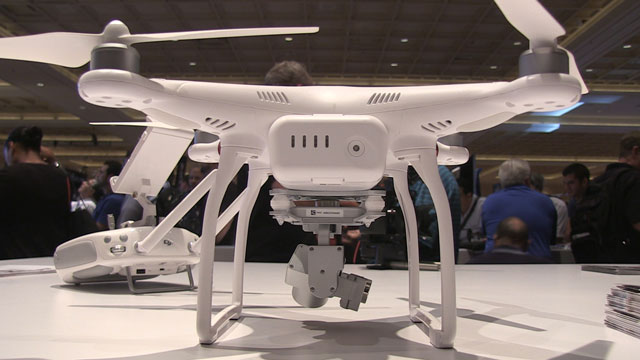
The Department of Transportation and the FAA have published new details about plans to register unmanned aircraft systems and set out their legal authority to regulate all UAS of any size, including model aircraft.
In a notice published in the Federal Register on Oct. 21, the DOT cited existing regulations that already require the registration of all aircraft, including UAS, and noted that Congress has confirmed the FAA’s authority to regulate unmanned aircraft of all types. And while the FAA has exercised discretion and chosen not to enforce that requirement on recreational UAS in the past, the dramatic increase in reports of unsafe UAS operations has caused DOT to reconsider that practice.
But while the FAA plans to enforce its authority to require that unmanned aircraft be registered, it also wants to make the process less burdensome than the current paper-based registration system. A task force announced by DOT and the FAA during an Oct. 19 news conference will assist in that process by providing input on the type of information that should be collected, what type of registration platform should be used, and which if any UAS should be exempt from registration requirements because they pose a negligible risk to the National Airspace System.
“We appreciate the FAA’s move to create a task force made up of diverse stakeholders to provide input on these important decisions,” said AOPA President Mark Baker. “The safety of our airspace and everyone who operates in it is paramount, but we also want to ensure that the UAS community can continue to grow and thrive. Although model aircraft have been operating for many years largely without incident, other applications for unmanned aircraft are relatively new and have enormous commercial and recreational potential. Right now, we have the opportunity to make sure that regulatory requirements are right-sized to provide real safety and accountability benefits without stifling innovation, unnecessarily burdening operators, or driving up costs.”
The planned task force of 25 to 35 members will include representatives from government as well as from both the manned and unmanned segments of the aviation community. The panel will have to move swiftly to develop recommendations in order to meet the Nov. 20 deadline set by the FAA.
To help the task force make meaningful recommendations, the FAA also has asked the public to provide comments answering specific questions about how to best identify individual UAS; whether registration should take place at the point of sale or prior to the operation of a new UAS; how registration data should be collected, stored, and used; and whether and how to collect a registration fee, among other issues.
In explaining its decision to develop a new registration system for UAS, the FAA noted that the number of pilot reports of potentially hazardous UAS operations has doubled in 2015 compared to the previous year, adding that pilots have spotted UAS at altitudes up to 10,000 feet and close to the approach ends of runways. The FAA also cited incidents that led to the grounding of firefighting aircraft earlier this year. The agency said it wants to create a culture of accountability and responsibility among UAS operators while creating “a space for the creativity, innovation, and exploration that will drive this industry forward.”
Part of the issue seems to be that, with the proliferation of highly capable UAS, many operators are unaware that they are operating within the National Airspace System and don’t understand the requirements for doing so safely. AOPA has been advocating for improved education to make recreational UAS owners aware of the regulatory and safety requirements affecting their operations. The association has contacted UAS operator groups and manufacturers, and has also formally weighed in on pending regulations governing small commercial UAS.
“Decades of experience with model aircraft have shown that most people want to operate responsibly,” said Melissa Rudinger, AOPA vice president of government affairs. “It’s up to us as a broader aviation community to identify the best ways to provide operators the tools and information they need to do that.”
While task force members have not yet been identified, AOPA has been actively engaged in UAS issues and has said it will participate if asked.



